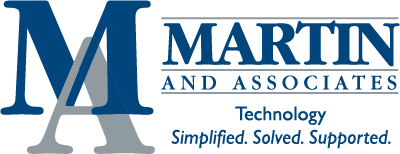There are many reasons organizations are making the switch from Sage 100 to Sage Intacct. Below are a couple key differences between the products.
SaaS vs Cloud-Connected –
Despite the name change for Sage 100, this does not indicate that Sage has migrated this legacy system to the cloud. Rather, it has been termed “cloud-connected”, being able to integrate with certain SaaS applications as well as be hosted.
Sage Intacct was born in the cloud, meaning it was designed from ground up as a SaaS solution loaded in from a multitenant environment. Intacct, as a true SaaS solution, does not require the traditional hardware, such as servers to operate. It is completely browser based.
System Updates –
Sage 100 is an on-premises solution, which is installed and
hosted locally on your server. Sage 100 typically releases one major update a
year. Applying these updates requires manual installation and configuration of
updates. These updates take significant planning and preparation time, as they
involve backups, testing and downtime during the update process.
Sage Intacct is a cloud-based solution, which means it is
hosted and maintained by Sage on their servers. Updates and new features are
automatically deployed to the cloud environment and users can access them
without any manual installation. Updates and enhancements are rolled out
quarterly without interrupting your access to the software. This allows users
to benefit from all the new features and benefits without downtime.
Reporting Capabilities –
Sage 100’s reporting capabilities are limited in terms of
customization. End users may find it difficult to create reports that meet
their specific needs. The software does not allow for flexibility in terms of
formatting and layout. Due to this limit, Sage 100 users may need to export
data to other programs to create more complex reports, which can be a time-
consuming process.
In Sage 100, reports may be generated on a schedule, but
users cannot view up-to-the-minute information as it becomes available.
Intacct offers dimension-driven reporting which allows the ability
to access or create reports that analyze real-time business performance by
business drivers – without managing a complex chart of accounts. Slice and dice
your data across dimensions to get different views without producing individual
reports.
Intacct also offers built-in financial and operational
reports. Use predefined financial reports and dashboards out of the box and add
more to reflect unique business drivers.
Manufacturing/Advanced Inventory needs –
Sage 100 is a strong solution for businesses that are trading hard goods, namely manufacturers and distributors that require item tracking and organization from production to inventory storage and shipping.
Intacct is a better fit for companies with service or multi-entity accounting software needs. Sage Intacct includes many industry specific financial management features tailored to CPA firms, non-profit, and healthcare that cannot be found in other ERP solutions.
If you are interested in learning more about the differences
between Sage 100 and Sage Intacct, please reach out to your M&A account rep
or email Cincinnati@martinandassoc.com.
